Turn Google Sheets into a Financial News Hub
Bookmarking financial websites has its uses. However, if you have done it for any length of time, you know it gets cumbersome to manage. You still want easy access to your favorite financial websites, right? Learn how to Turn Google Sheets into a Financial News Hub from the information in this article.

What's In This Tutorial?
A Bit About Google Sheets
Google Sheets is a web-based spreadsheet packages from Google.
Why Use Spreadsheets for You Newsfeeds?
In this section (below), I will explain why it may be useful to use a spreadsheet for your news feeds.
Why Google Sheets Can Be Your Financial News Hub
Learn more below how these spreadsheets can be turned into a powerful news provider for financial info.
Excel Can Do This Too! (Sort of...)
In this section below, you'll learn how you could use Excel to accomplish the same results. However, it's a lot more work and a lot less straightforward.
Setting Up Google Sheets
I'll take you through the steps to get set up. Don't worry, it's not difficult.
How and Where to Find Newsfeeds
There are nuances when trying to find feeds. You are welcome to start with the ones in my template. But, I will show you how to find feeds below.
Use My Google Sheet as a Template (for Free!)
I will include a link to my Google Sheet. You can use this as is or customize it however you like.
A Bit About Google Sheets...
Ask any finance guru a few years ago if they ever heard about Google Sheets. They would have either said no, or looked at you in an odd manner. Google Sheets did not measure up to the quintessential spreadsheet program, i.e., Microsoft Excel.
Today, it's an entirely different story. Google has allocated resources to make Google Sheets a comparable product to Excel. And, it's working. Google Sheets can come close to replacing Excel.
The diehard Excel users will protest and give you several examples of how Excel is still superior. That may still be true, but don't count on that for too much longer. Microsoft is closing the gap, quickly.
Why Use Spreadsheets for Your Newsfeeds
There are plenty of feed readers on the market. Why not use one of those? The main reason is that the basic functions included with most of these readers are limited. For more functionality, you have to pay. Further, you have to download yet another software package. Usually, these packages don't do quite what you want them to.
Using Google Sheets for this purposes means you can use it anywhere you can access your Google account. It's also an incredibly easy way to implement a reader (see below).
If something were to happen to a RSS feed service, or they start charging more than you want to pay, you'll be stuck having to import all your feeds into another reader. This won't be a problem with Google Sheets.
Why Google Sheets Can Be Your Finance News Hub
Why even bother using Google Sheets for this task? Google Sheets has a built-in command called IMPORTFEED. The parameters are IMPORTFEED(Feed Address, Query) where:
Feed Address - RSS feed for your financial website (more on this below).
Query - This is what you want the IMPORTFEED command to return. For this article, I am only describing the item title and the item url. Each command would be used with quotes as follows:
NOTE: For the demonstration, I am using the feed that is inherent with Financial Markets Education. The feed is used below:
=IMPORTFEED("https://FinancialMarketsEducation.com/feed", "items title")
Here is a screen capture of the items title process:
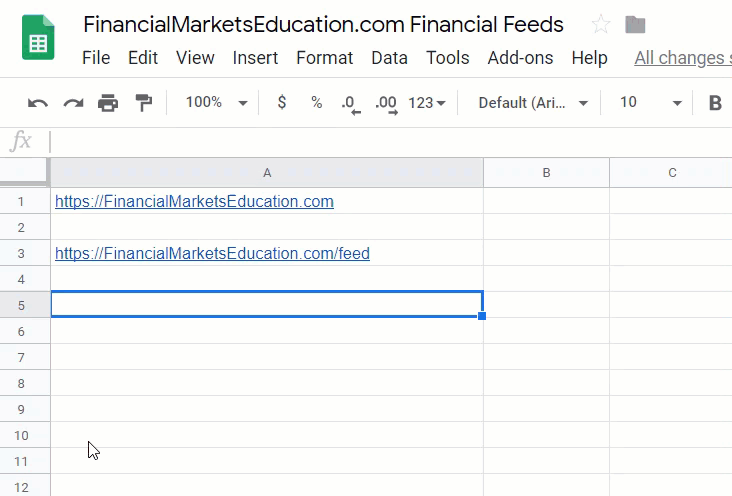
A great feature of Google Sheets is how it gives your not just the parameters you need to use, but descriptions of those parameters. You can also get more help by clicking on the link in that instant help screen.
=IMPORTFEED("https://FinancialMarketsEducation.com/feed", "items url")
You can see how that is done with the following:
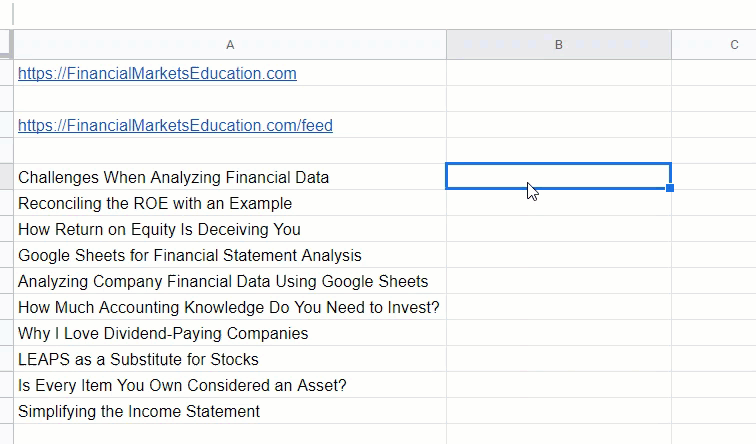
As you can see from both examples, insteat of hardcoding the feed address, you can point it to a cell that contains that feed address. In the above examples, that feed address is in cell A3 (https://FinancialMarketsEducation.com/feed)
The advantage of not hardcoding the feed address is when you replace the feed in A3, both variables ("items title", "items url") will update with the correct information.
Excel Can Do This Too! (Sort of...)
If you are a diehard Excel user, you probably shouting at the computer screen at me and chanting a bunch of colorful words that I can't repeat here. You're going to tell me that Excel can accomplish the same task.
Well, Excel can sort of do the same thing, but it's roundabout way of doing it. You'll have to make sure your Developer add on is installed. Then, you have to format the XML files, and then choose from several fields that you don't need or want.
With Google Sheets, all can do everything you need with ONE command. No messing around with developer add ons or any add ons for that matter. It's built-in to the engine!
Caveat: I am not knocking Excel. It's a great product!
You can see, though, how easy it is to implement this functionality in Google Sheets.
Setting Up Google Sheets
Here is what you need for starting with Google Sheets: A Google account. That's right!
All you need is a Google account and you then have access to Google Sheets. When you set up your Google Sheets (assuming you have an account), then you simply go to:
Yep! It's that simple! Nothing more complicated than this.
If you don't have a Google account, you can follow the directions in this video:
How and Where to Find Financial News Feeds
Surprisingly, this is perhaps the trickiest part of this process. Unfortunately, you cannot simply use the website address of your favorite financial websites. You'll need a feed from the site (or a third-party RSS) aggregator.
I won't get into the technical specs of RSS, but many of the acceptable addresses are either files with a .rss extension, or files with a .xml extension.
For WordPress websites, it's generally easy to find the RSS feed: you simply append /feed to the website address. You've seen this with my website:
For this website,
https://FinancialMarketsEducation.com
Just append the /feed as follows:
https://FinancialMarketsEducation.com/feed
If you have a WordPress website, give it a try.
For other types of websites (not WordPress), you can use Google to help find sites that have RSS feeds. Simply append the +rss to a search. For example, to find stock market RSS feeds, type in the following into Google:
"stock market" +rss
The quotes around "stock market" should help target your search, but you can remove the quotes and see what happens.
You can also search for specific types by using the inurl: operator as follows:
"stock market" inurl:rss
"stock market" inurl:xml
Searching for xml files may not be as fruitful but still worth a try. Essentially, an RSS feed is a form of XML. However, an XML file is not necessarily an RSS feed.
You can use the the following words as part of the search (either with or without the inurl: operator):
rss
xml
feed
rss-feed
When all else fails, and you have not found a feed for one of your favorite websites, you can always use software or services to create a feed for you. For this exercise, I will use another website that I manage called Get Paid Boot Camp.
I am using this website because some interesting situations occur when creating a feed for this website. It is good to point these situations out so you know what you can run into.
To create the feed, you can use an online app called RSS.app:
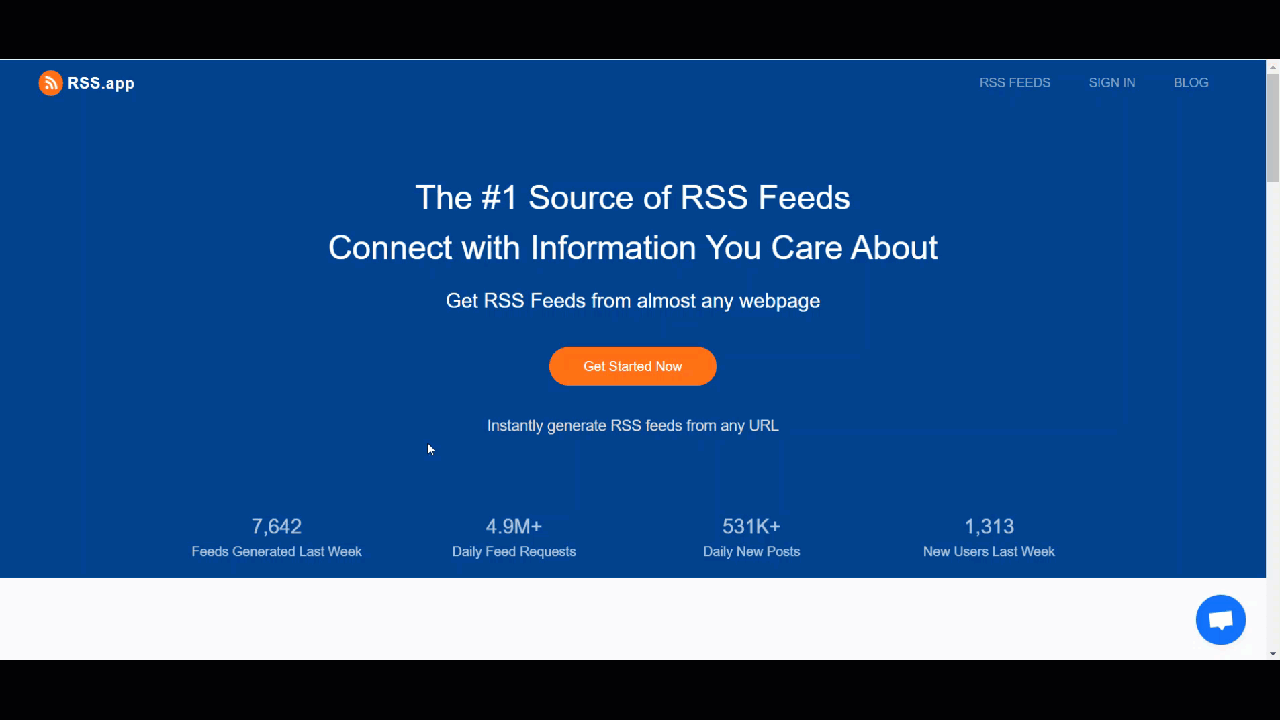
Rss App to Turn GetPaidBootCamp.com into RSS Feed
- Click on the Get Started Now button.
- Choose Webpage to Rss Feed
- Enter the URL (https://GetPaidBootCamp.com) - yours will be different.
- Follow the directions below
Next, Click on the Get RSS Feed Button:
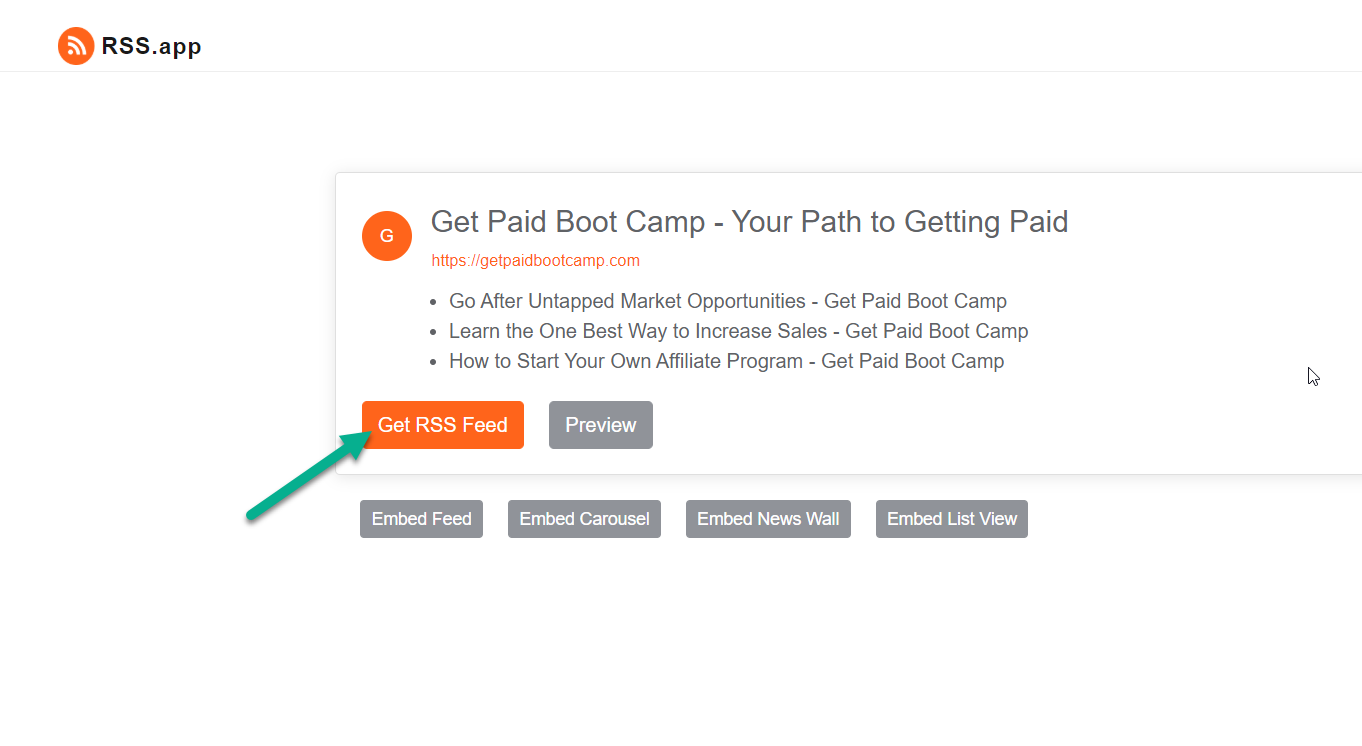
Get RSS Feed for GetPaidBootCamp.com
A form pops up to sign up for the service. Use whichever you want. I used the Google option.
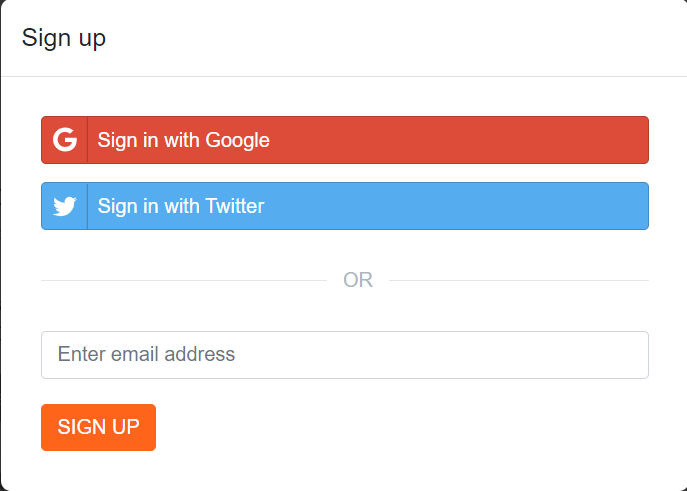
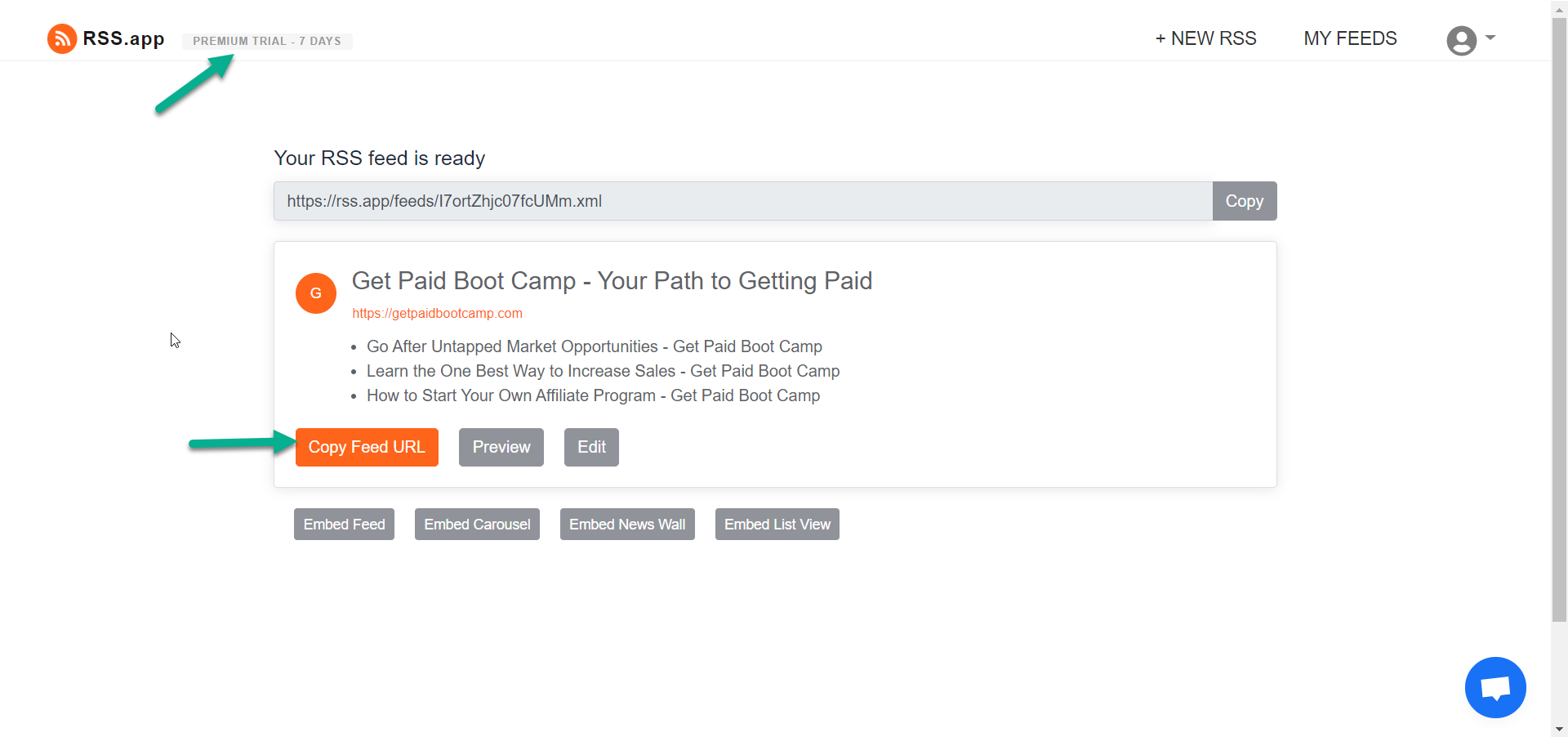
Click on the Copy Feed URL and that is the feed you use in Google Sheets. One other item to point out, this particular RSS capture service is not free. It comes with a 7-day trial. But, there are plenty of other services that you can find that perform the same functions. Usually, you won't need to do this that often (unless you have a lot of feeds).
I mentioned before that this method isn't perfect, which is why I used GetPaidBootCamp.com to illustrate. If you look at the front page of GetPaidBootCamp.com:
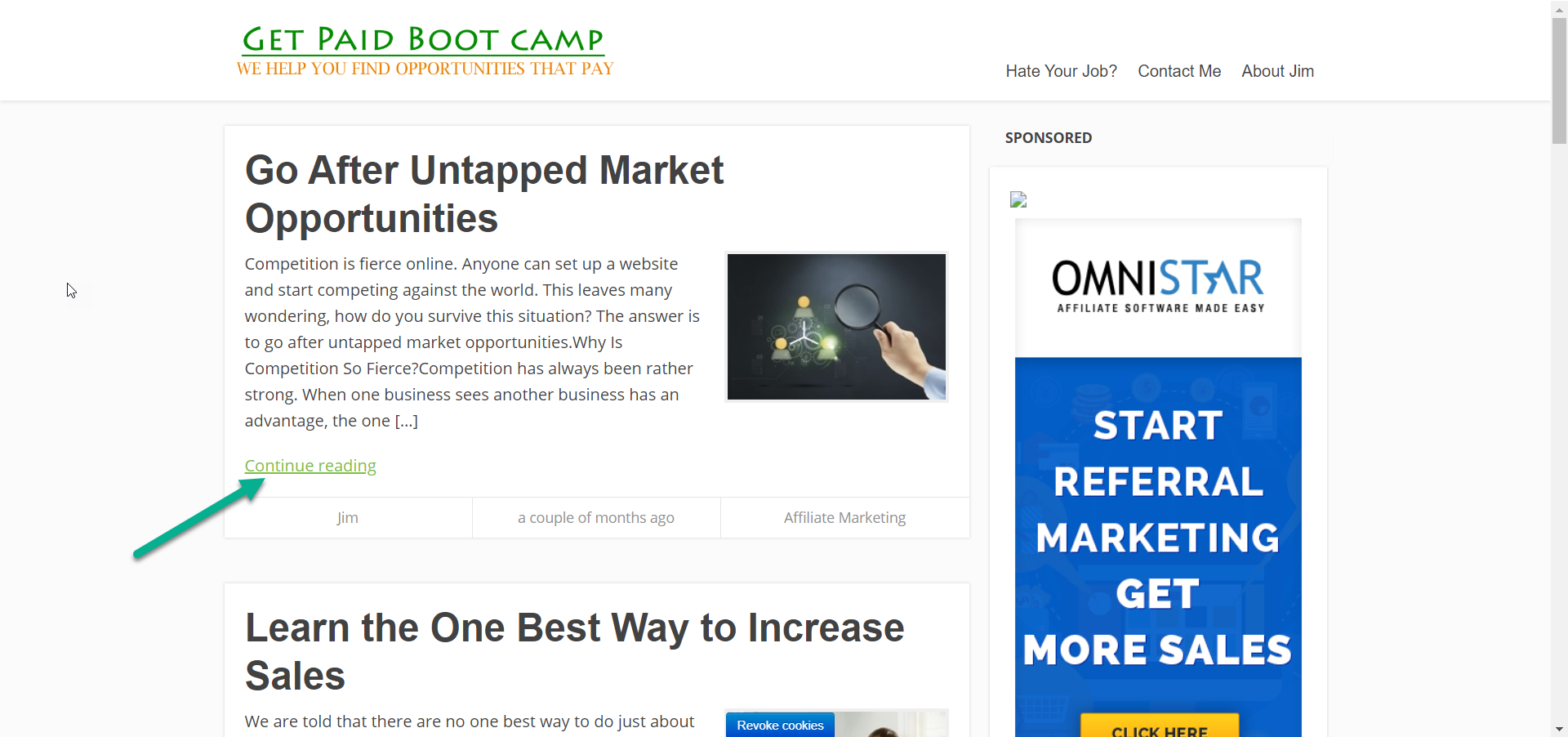
GetPaidBootCamp.com Main Screen Top
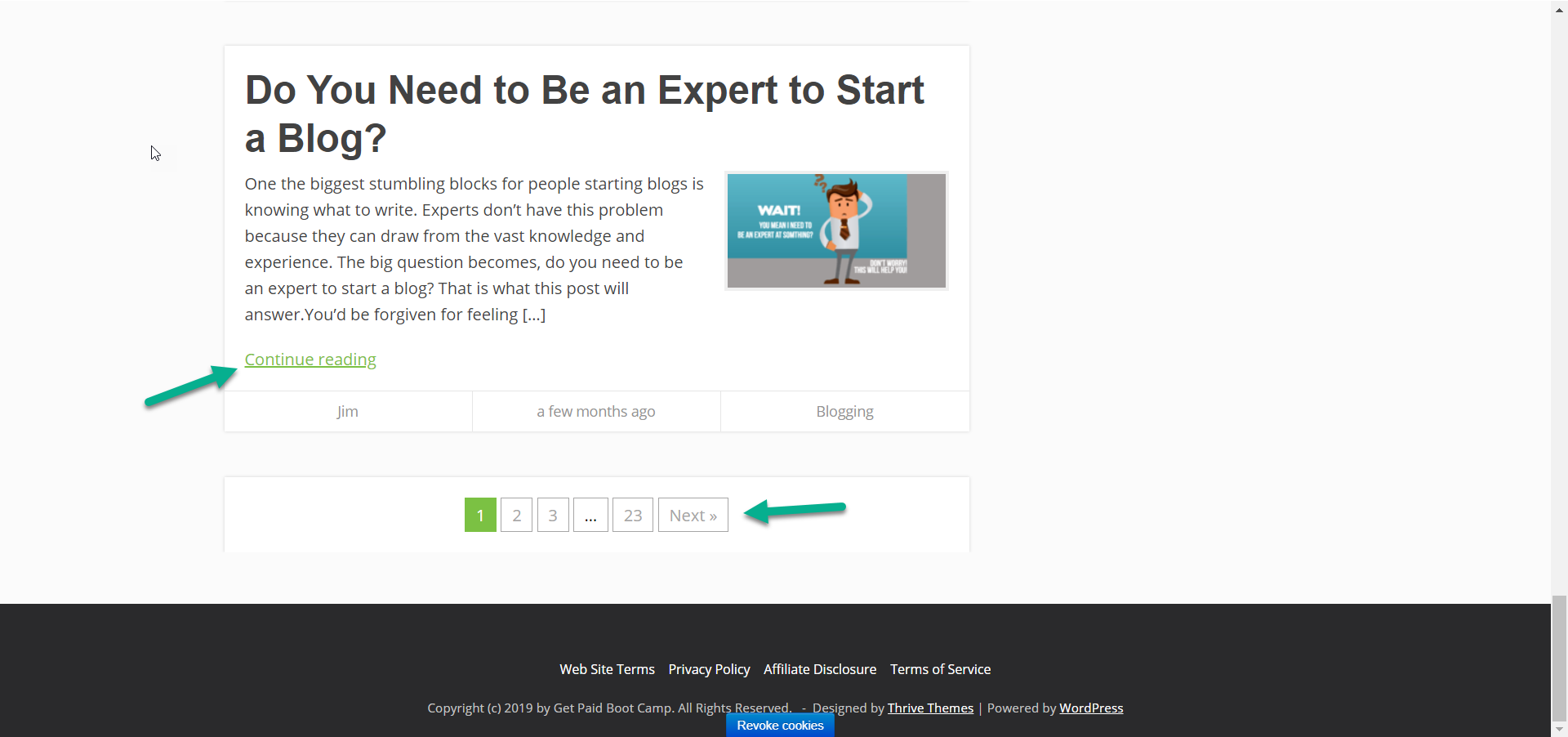
GetPaidBootCamp.com Bottom of Main
When I included this feed in my Google Sheets, it picked up the "Continue reading" and the "Next button at the bottom:

I am not sure if it's because it is a WordPress website or if there are other reasons. But, this is something to be aware of. Also, notice the feed is cryptic and doesn't tell you where it's coming from. If you want to make sure you know, indicate the website on the page somewhere.
Use My Google Sheets as a Template
I have made the Google Sheets for this article available as a public sheet. This means you are welcome to use it as is or alter it with your own feeds.
Click on the button below to get the Sheet:
As you peruse this sheet, you'll see that each feed has it's own tab (bottom). To add new feeds, simply duplicate one of the active feeds, rename the tab as follows:
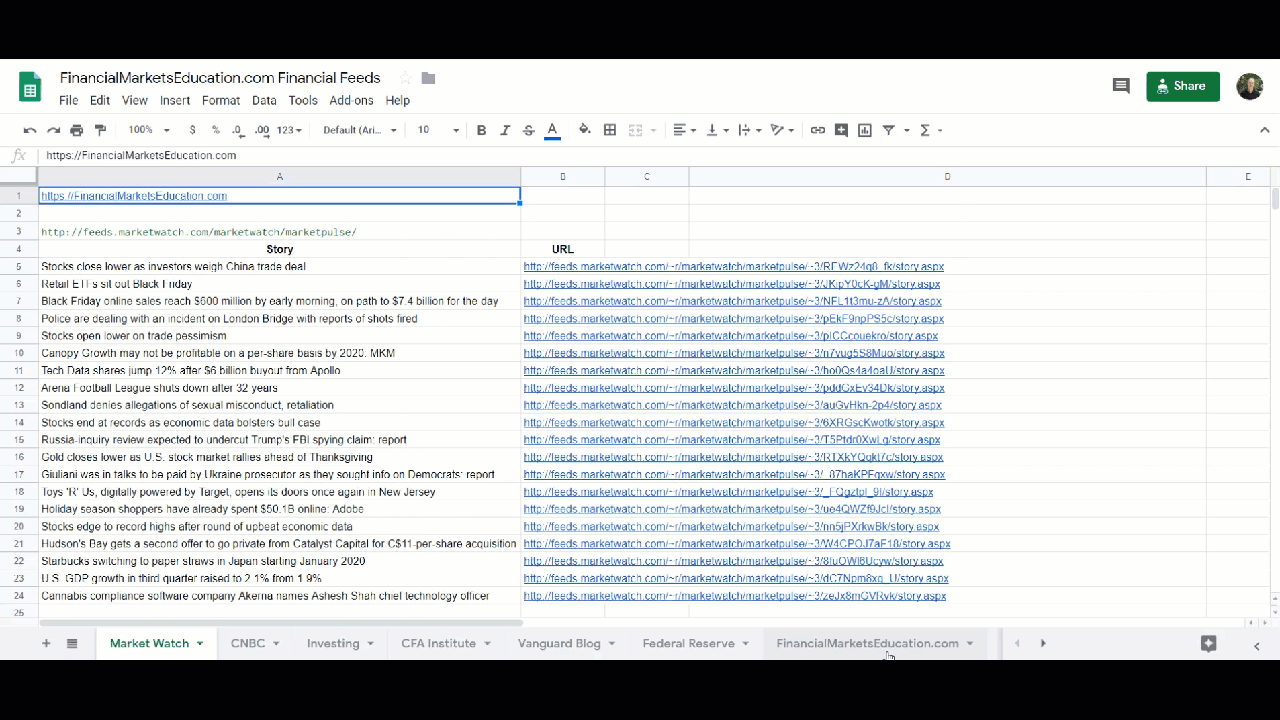
Then, replace the feed in cell A3 with the one you found from searching:
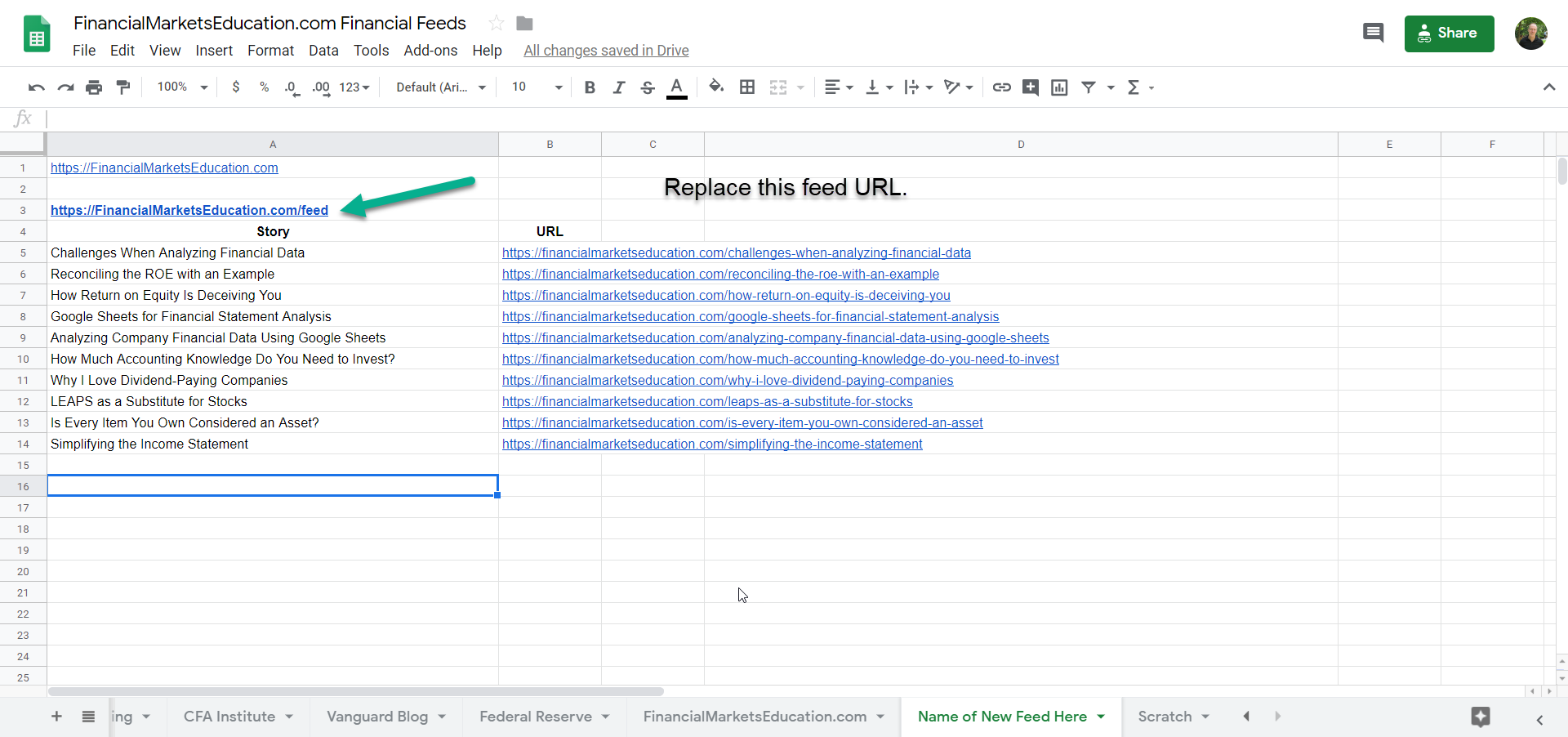
As you can see, Google Sheets is a great choice to set up readers for your RSS feeds. It's not the only option, of course, but there are plenty of advantages in using this. Let me know in the comments what you think of this tutorial. I'd love to know. Please, though, no SPAM. It won't be approved!

